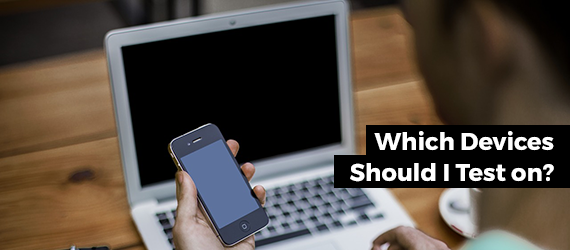So, you want to make a good quality digital service with happy users and good reviews. Naturally, you decide to test your digital service to make sure the quality meets your user’s demands. Then, the question comes… which devices should I test on? In this blog, we’ll show you the journey you should take to find this answer according to your specific situation.
The Importance of Testing on Many Devices:
Some developers assume that if there is not a bug on one device, it will not show up on other devices. However, too often, there are few bugs on certain devices and hordes of bugs hiding out on others.
Additionally, sometimes there are only bugs on certain configurations. For example, there could be no bugs on an iPhone 8 that has the most recent update, but there could be bugs on an iPhone 8 with an older update.
Some companies want to save time by testing on fewer devices, but this may not be the answer to long term success and a good brand reputation. Behind each device lies hundred of thousands of users. The effects of bugs on just one device could create exponential consequences. Here is a graph that shows how spread out the smartphone market is:
With so much at stake, you want to test on as many devices as possible. However, with thousands of devices and updates, it’s impossible to test your digital service on everything. That’s why is crucial to strategically select which devices you are going to test on to ensure quality for the largest amount of your users as possible. This is done through a user tendency and market analysis.
Doing A User Tendency and Market Analysis
If your company uses Google Analytics, you can identify exactly which devices and browsers your users are using. Selecting the most used devices is a good start.
However, It is also important to realize that technology is always changing and so are devices. Just because a certain device is used a lot right now, doesn’t necessarily mean it will be used that much 6 months from now. Seeing which phones are new to the market and which devices are dying should also influence your device-selecting strategy.
If you are entering a new market or you do not have analytics on your users, you can estimate which devices your users are using by considering the following:
1. What are the user tendencies in the markets you are targeting?
Each country has different user tendencies. Studying these aspects can help you select the devices to test on that are most relevant to your users. Here is the information you should gather:
- If the market uses mostly desktop devices or if they are evolving towards smartphones or tablets.
- Which device brands they prefer (iPhone, Samsung, Huawei, etc…)
- How quickly they tend to update their devices
2. Who does your product target?
If your digital service is a software for businesses, you would target desktop users more than smartphone users. If it is a travel website, it might be good to test on both desktop and smartphones. If it is a digital service that is meant to be used outside, it is best to fully test on mobile devices.
3. Who are your users?
Whether your digital service is targeting people ages 60+ verses teenagers between 13-18, has a huge impact on which devices you should test on. The older population depends much more on the desktop, when young users depend more on smartphones.
Once you have done your user tendency and market analysis, you can start your testing campaign with more confidence. You know that the time you spend on testing will be the most productive as possible.
If you would like assistance in your user tendency and marketing analysis, feel free to contact us.



